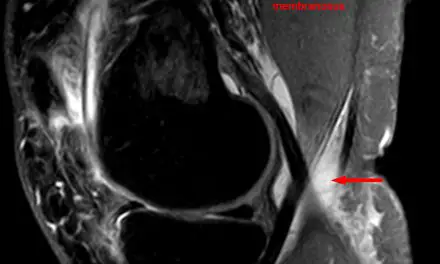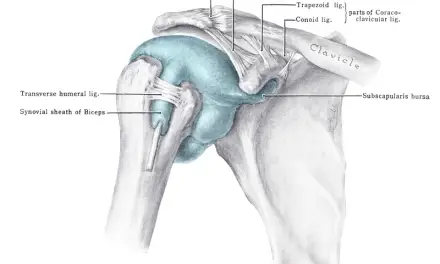You often see the term “deep tissue massage” on the service menus and websites of massage therapy. However, there’s very little consistency as to how this is defined between massage schools, massage therapists, spas, and wellness clinics.
Because there are so many protocols used with deep tissue massage, a more common definition of this type of session lies in the intention of the therapist, not one particular modality or technique.
These sessions typically focuses on one area of your body using firmer or more sustained pressure, which is quite different from the full-body flow of a relaxation massage.
Deep tissue massage uses a number of methods that clients often request who are looking for injury rehabilitation, joint mobilization, or treatment of specific muscle and joint problems. These methods tend to be very popular among athletes for treating sports-related issues and for those who deal with chronic pain.
Modalities that often use a “deep tissue” approach include sports massage, shiatsu, Thai, lomi lomi, and Balinese style massage, and numerous other offshoots.
Swedish massage vs. deep tissue massage
Clients who are new to massage may feel less inclined to ask for deep tissue massage because of claims that this type of bodywork is intense or painful.
Instead, they opt for a standard Swedish massage. But both Swedish and deep tissue massage share fundamental principles and only differ in their intention, pressure application, and focus.
Swedish massage (referred to as classic massage in Europe), is the foundation of Western-style relaxation massage. It’s a common misconception that Swedish medical-gymnastic practitioner Per Henrik Ling created this concept model of modern massage in the early 1800s.
It was actually Dutch doctor Johann Georg Mezger who created the application of five specific strokes that are now known as Swedish (classic) massage. The terms were named from French terminology by Dr. Mezger due to the rising popularity at the time for the French terms masseuse and masseur.
The main components of both Swedish and deep tissue massage are:
- effleurage
- petrissage
- friction
- tapotement
- vibration
Applications of these techniques can be arranged in many ways according to each therapist’s preference, which gives a more unique and artful approach to the bodywork. Strokes can be applied with fingers, palms, elbows and forearms at any level of pressure.
Swedish massage sessions are generally performed by applying oil or lotion onto your skin in a flowing, continuous manner with steady pressure applied across the entire surface of the body.
The pressure used during these sessions is typically light to moderate (based on your preference) and offers attention to the whole body for a general relaxation experience.
While a Swedish massage session will offer attention to the whole body, deep tissue massage sessions tend to focus more on your specific goal. The massage therapist will start with Swedish massage to allow you to get used to their touch, warm up the tissues, and hone in on a specific area of concern.
With the five foundational massage strokes, deep tissue massage often incorporates forearm and elbow moves applied with varying pressure to a targeted area. Stretching—either actively or passively—can also be added into a deep tissue massage, which is a predominant element in athletic treatments, Hawaiian lomi lomi, Thai, and Balinese style massages.
Stripping, or deep friction pressure, can also be applied with the therapist’s knuckles, elbows, forearms, or thumbs. Deep tissue massages don’t always include oil or lotion and can be performed while you’re fully clothed.
Deep tissue massage myths
Massage therapists who keep themselves up-to-date in understanding how the human body works is critical in a growing industry because they are able to give you the most accurate information available.
This means dispelling a few myths that keep circulating and creating unrealistic expectations (or even fears) around deep tissue massage sessions. This helps you feel safe and confident that you’re receiving a massage that is not only exceptional in technique but is also evidence-informed in its theory.
For example, there’s a common myth that deep tissue massage is only effective with intense, painful pressure. Other myths include that deep tissue work will break up fascia and muscular adhesions, thus freeing the body from restriction, and that the massage will release toxins from the muscle tissues.
Deeper pressure, however, will not yield a better result, nor is it able to deform fascia, manipulate scar tissue, or detoxify the body in any way. Adherence to these beliefs is not only unethical but also potentially dangerous to clients.
Deeper pressure is better for pain relief
The wellness industry trope of “no pain, no gain” has been a longstanding and inaccurate ideology. Some clients may feel that there’s a certain badge of honor that comes with being able to withstand large amounts of pressure in a massage, and others may feel that it is expected with deep tissue work. This simply is not the case, and this has created a problematic reputation for deep tissue treatments.
Everybody has a different threshold for both what’s considered their level of feeling soothed and also their level of counterproductive pain. Pressure preferences can also change based on the area of the body. For example, shoulders may be able to handle more pressure than the calves.
Applying too much pressure can create an adverse reaction in the body, like tensing up, but the right amount of stimulation to the tissues and nerves can elicit a relaxation response.
A painful response may cause anxiety and tension to spike in the nervous system and negates any beneficial effects of the massage. In some cases, bruising and tissue damage can occur, which is absolutely not a desirable result from a massage that is meant to improve health.
If there’s such a thing as “too much” pressure in a massage, then how would you know how much is enough to be effective?
The unscientific answer is, whatever pressure allows the client to feel relaxed and with a modest level of stress relief from the session. The scientific answer is a bit more complex because the mechanisms of how massage works on the body are not fully understood.
Rather than looking at deep tissue massage as a direct manipulation of joints, ligaments, muscles, and organs, it’s more important to look at massage from a neuroscience perspective.
Massage uses direct touch to the skin to engage the nervous system through its network of receptors, nerves, and tissues.
Human skin has about 1,000 nerve endings per square inch and is rife with four different types of mechanoreceptors that receive information about touch, sound, pressure, vibration, light, temperature, and any other stimulus that may give the brain information about the external world.
Depending on the type of touch and duration of compression, they transmit information at different rates. depending on what is detected. These cutaneous nerve fibers innervate the skin, skeletal muscles, bones, and joints. When a massage therapist applies pressure, stretching, kneading, and stroking to the skin, signals are transmitted to your brain and changes how you sense your body.
There are also other specialized peripheral sensory neurons called nociceptors. These are used to detect potentially dangerous stimuli at the skin level.
According to the research of Dubin and Patapoutian in 2010, “Normally, nociception and the perception of pain are evoked only at pressures and temperatures extreme enough to potentially injure tissues and by toxic molecules and inflammatory mediators.” In short, nociception is a sensory process that can lead to pain.
The relevance of this neuroscience is very important when considering pressure in deep tissue massage. When a massage therapist applies the right pressure and stimulation to a client, this can result in a positive sensory experience, reduction in stress, and an overall calming effect.
This is the difference between a good and bad deep tissue massage, and why it is important to disavow the “no pain, no gain” mentality in massage therapy techniques. If a massage results in body bracing and a fight-or-flight response—instead of relief from pain and stress—then it’s neither a good massage nor a helpful one.
Deep tissue massage breaks up fascia and tissue adhesions
Another pernicious set of myths around deep tissue massage are the ideas that massage in any form can loosen fascia and break up muscular adhesions.
This is a hot topic of debate in the manual therapy and fitness world. There are many claims that particular protocols can unwind, release and manipulate fascia and adhesions in order to restore structural integrity to the body, and relieve pain.
Although well-packaged in their marketing, these ideas are often subject to scientific studies that are flawed or rife with cherry-picked evidence. With a better understanding of what fascia and adhesions are (and are not), these myths are quickly debunked.
The human body contains many different types of connective tissue with fascia being one of them. Fascia is defined by medical dictionaries to be a type of collagen-dominant, fibrous connective tissue found throughout the body in bands or sheets that separate muscles and attach or enclose the internal organs.
It’s one of four types of connective tissues found in the body, and together these tissues serve to protect, insulate, bind and support the internal organs, store fuel reserves (in the form of adipose cells), and transport substances within the body.
There are many modalities that have sprung from misunderstanding of fascia’s role in the body, and these misconceptions have overwhelmed the massage and fitness industry.
The Fascial Distortion Model that was developed by Dr. Stephen Typaldos in 1991 was the springboard for the idea that fascial deformations were the cause of most muscular pain conditions.
The claims coming out of this model promote the idea that these issues can be fixed with varying degrees of force to the fascia itself. This has led to several false claims by a number of agencies that fascia can be melted, rolled, and/or manipulated with various specialty tools and techniques.
Unfortunately, while these make money for the sellers, they do very little for the consumers to get them out of pain.
Due to its densely fibrous nature, fascia is so tough that surgeons need scalpels to be able to cut through it. The idea that it can easily deform with touch is implausible and many studies indicate this.
One such study by Chaudhry and colleagues (2008) indicates that only with incredible forces would fascia be able to be manipulated in the way that many proponents claim.
If deep tissue massage was able to be applied with the force necessary to shear even one percent of fascia, it would have to be about 2,000 pounds of force—literally a crushing pressure to the body.
More massage and fascia myths
Even if fascial imbalances were responsible for creating body pain, receiving a deep tissue massage would not be capable of fixing them.
Rather than looking at fascia itself as being the most important structural system, focus the mechanoreceptor innervations that are responding to the manual presses applied during a massage.
Similar to fascial myths, the idea that tissue adhesions spontaneously develop to become painful muscular pathologies has also lingered around the massage industry.
These alleged adhesions are also termed as scar tissues, fibrous bands, muscle knots, or trigger points. Although the sensations and localized pains are very real to clients, scar tissue and “stuck” tissue do not spontaneously occur without prior surgery or injury.
Many surgical studies have indicated that there can be post-surgical adhesions and scar tissue development after procedures due to tissue traumas, However, there are no studies that prove that non-traumatic adhesions exist.
Andersen et al. (2009) indicated in their muscle pain study that there can be touch-sensitive places within the body that do not correlate with any true muscular tightness or rigidity, but rather feel smooth and undisturbed. This and other research indicate that tissue quality does not overlap with pain on a consistent, predictive basis.
The body can have any number of tender points that create textures that are normal functions of being a human being. This does not mean that the muscular tissue is stuck together, but only that there are areas of sensitivity that the nervous system is sensing, but not properly pinpointing.
If massage therapists cannot manipulate fascia or break down scar tissue in a deep tissue massage, what explains the sensations of “releasing” these tissues or the sensation of a “knot” in the muscle?
This can often be explained by another phenomenon called palpatory pareidolia, which is a neurologic event in which a vague stimulus (in this case, an unknown skin texture) is perceived as distinct and tangible.
This is the same phenomenon that allows humans to see familiar shapes in clouds or religious figures in objects. The human brain will attempt to fill in something familiar when it cannot fully interpret an impulse, sensation or visual cue.
In massage therapy, this misinterpretation can lead to a certain magical thinking as far as what is being discerned through therapeutic touch.
A further discussion of fascial plasticity by Schliep (2003) brings to light a possible understanding that stimulation of various mechanoreceptors in the skin may create palpable changes in the tissues that may be perceived by massage therapists or the client.
This is not an unwinding or change in the fascia, but rather an emphasis on the profound effects to the nervous that touching skin may have by creating stimulatory impulses that are sent to the brain and interpreted with nervous system responses.
Massage releases toxins
Many clients seek deep tissue massage for another goal to “release toxins” from the body. This is one of the oldest myths of massage that still seems to be resurrected no matter how much research surfaces against the idea to bury it.
Commercialized wellness industries have spread the “toxicity” fear to where clients have felt it would be necessary to seek treatments to “detoxify” their bodies. But true toxins, in the medical sense, are things that are poisonous or bad, and of two ways to detox the human body, only one of those ways merits validity.
Benefits of deep tissue massage
Deep tissue massage shares many similar benefits with other types of massage:
- pain relief
- reduces anxiety and depression
- relaxation
Although it’s difficult to find high-quality research to analyze the mechanisms of how massage works due to insufficient funding and lack of academic support, it’s still important to explore the benefits that it offers.
The most obvious one is that massage therapy feels great, and the addition of massage to a self-care routine can be critical to positive mental health.
The sense of touch on its own can be very powerful, and the complexity and specialization of the nerve fibers in the skin shows that humans are built to receive rich sensory experiences.
The ability to have pleasant touch coded into the nervous system can allow for new ways to offer therapeutic pain relief.
The most evidence-based benefit to deep tissue massage is that it reduces anxiety and depression. This is a rather large benefit; anxiety and depression can be standalone conditions or be symptoms of other illnesses and chronic pain issues.
Psychologist Christopher A. Moyer, who specializes in conducting meta-analyses in massage therapy, concluded that massage treatments result in “sizable reductions of depression” and “significantly reduce state anxiety.”
Considering that anxiety and depressive disorders are prominent health concerns globally, having complementary therapeutic options in healthcare can be very welcome.
It’s important to be aware of the minimal evidence surrounding its medical efficacy, but it’s a great way to receive comfort and connection as stress relief.
What to expect with a deep tissue massage session
Before any massage, your therapist will have you fill out a health history intake form to determine if there are any contraindications for massage, provide a Health Insurance Portability and Accountability Act (HIPAA) statement to sign for privacy and also inform you of your rights and responsibilities.
They will also explain techniques that will be used in the session, especially if it’s a bodywork style you haven’t received before.
Communication before, during, and after massage is key. During the intake before the session, you will be asked about your preferences and address any questions that you may have. Don’t be afraid to ask about what to expect before the session.
Massage therapists will often go over draping procedures, and clarify where he or she will work on. Draping procedures are in place to protect modesty, provide warmth, and comfort, and delineate a physical boundary between you and your therapist. The level of comfort of undressing varies among individuals, and there’s no wrong answer.
Ultimately, proper draping should elicit feelings of safety and comfort and will leave no questions for you as the client. Only the area being worked on will be undraped in the session while all other areas remain covered. If adjustments need to be made throughout the session, your massage therapist will be more than happy to accommodate.
Deep tissue massage work in many instances focuses on high impact areas of the body, such as shoulders, chest, hips and gluteal muscles. Working on chest or gluteal muscles can be uncomfortable or a sensitive boundary for some clients, so the intake is an ideal time to ensure that there’s a clear understanding of which areas of the body will be worked on, and which will not.
This is another way in which massage therapists will ensure safety throughout the session and ensure that massage is not only helpful but enjoyable for you.
Remember, deep tissue massage does not require any particular intensity of pressure in order to be effective. During the massage, your massage therapist will check in with you and be open to making adjustments for your comfort.
If you don’t like a certain pressue, you don’t have to wait until the therapist checks in to speak up about making changes.
Additional adjustments to ambiance can also be made, such as temperature of the room, music volume or lighting. At times, it can feel vulnerable on the table, so also be sure to make your therapist aware if you feel the need for more draping, or if you would like more or less time on a body area.
Massage therapists want you to feel safe and present during a massage and are happy to make changes to ensure this throughout the session. They are trained to encourage an open line of communication at all times, and expect feedback and information before, during, and after your session. You have the right to make adjustments, or even stop the session, at any point in time.
Once the massage is finished, your therapist will answer any additional questions you may have, invite feedback, and discuss goals for your next massage should you choose to rebook. Sometimes “massage brain” comes into play, which simply means that you are in a deeply relaxed state and may be too ensconced in the experience to think of any questions.
Massage therapists should never be afraid to answer questions that may come up after your session. It’s their goal to ensure that the experience leaves you refreshed, empowered and confident that you received the best massage session possible.
Deep tissue massage precautions
Sessions should be rescheduled when you have a cold, flu, or any other contagious disease, even if you feel it is mild or negligible.
Because massage is not able to detoxify the body in any way, coming in sick for a massage not only can overtax the your already-compromised system, but is also inconsiderate for the therapist’s health and well-being.
You should also avoid massage if under the influence of drugs or alcohol, including any prescribed drugs for pain.
In the case of sunburn, cuts, abrasions, varicosities, undiagnosed pain, or localized inflammations, it’s possible to receive massage while avoiding touching these areas.
Massage should also be avoided if you develop any unusual skin conditions, accidents, recent surgeries or sudden onset of unusual symptoms that may include visual impairment, intense headaches, or anything that can’t be traced to a particular cause.
If you have an underlying chronic health condition, it’s always advised to seek the guidance of a medical professional or treating physician to ensure that deep tissue massage is safe and won’t create additional concerns. Unless a massage therapist has a qualifying medical degree, they’re not legally able to diagnose any conditions you may have.
There are questions as to whether or not pregnant clients can receive deep tissue massage work. As with any health matter, if you’re pregnant, consult your primary care physician before starting anything new.
Unless it’s a high-risk case, there’s no reason that an expecting mom needs to avoid massage therapy during pregnancy. Because deep tissue massage does not equate to extreme pressure, it’s no more dangerous than any other activities in a pregnant woman’s daily life.
Much like other myths in massage therapy, there are general misconceptions surrounding whether or not it’s safe for pregnant women to receive massage. Massage cannot cause miscarriage or induce labor, and these myths have come from both fear, causal misattribution, and unsubstantiated claims of Traditional Chinese Medicine.
Alice Sanvito, a notable evidence-based massage therapist, stated, “If a woman is not restricted from normal activities due to other complications, it is not necessary to deny her massage during her first or any trimester.”
Using common-sense precautions and seeking knowledgeable practitioners will ensure a safe and effective experience for clients.
How to find the best deep tissue massage near you
When seeking a deep tissue massage, it’s important to find a therapist who is not only knowledgeable, but compatible with your goals as a client.
Seeking therapists who are evidence-informed in their practices can help to ensure they are meeting the needs of their clients and using sound judgments with their skill sets. Whether it’s to relieve tensions from working out or chronic pain, finding a therapist that specializes in the deep tissue massage techniques you need will ensure the best session possible.
Getting referrals is a worthwhile resource if you have a particular condition you would like treated. Licensed medical professionals often have massage therapist resources that specialize in particular conditions or complaints.
Professional organizations such as the American Massage Therapy Association or Associated Bodywork and Massage Professionals often have available member resources and they usually check the qualifications of the therapists listed on their sites.
The Federal government does not regulate massage therapy. It allows each state to regulate massage per their own health department regulations.
While there are a few states that don’t require formal training for massage, you shouldlook for therapists who have formal training in massage and will provide care in a safe and effective manner. This ensures that you’re receiving care by a therapist who is knowledgeable pathology, anatomy, massage ethics, and regulations.
Also, be sure they have applicable licensure or certifications based on the area you are in, and hold appropriate massage liability insurance.
Don’t be afraid to call and ask questions that may not be offered on the therapist’s website. It’s okay to ask how many years they have been in practice, ask about general philosophy and specialties, and what type of training they have.
Ask what the expected fees for services will be, how many sessions they think you might need, and if applicable, whether they accept insurance.

Heather Thuesen, LMT
Heather Thuesen, LMT, practices at Wellspring Health in Tioga, North Dakota. She also practiced in Fort Collins, Colorado, since 2014. Her areas of interest and specialization are in athletic and movement work, chronic pain conditions, anxiety-related disorders, and working with adolescents and teens from age 10 to 17.
She is continuing her studies in psychology and PTSD/trauma-related conditions. In addition to creative writing, she has an avid interest in travel, social culture and photography. Her favorite travels involve chasing storms, good coffee, homemade pie and Kerouac-inspired road trips.





